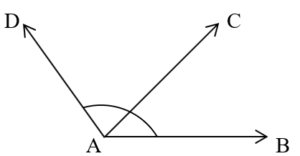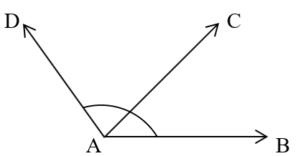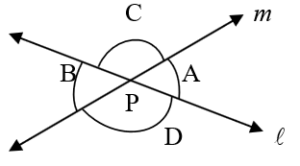Blog
PAIRS OF ANGLES
- July 22, 2020
- Category: PAIRS OF ANGLES
☼ PAIRS OF ANGLES :
■ Adjacent angles : Consider two angles BAC and CAD with the same vertex A and the arm AC common to them. Two such angles with the same vertex, one arm common are called adjacent angles. Or, we can say that two angles in a plane are adjacent angles if they have common vertex, a common arm and their interiors do not overlap. Thus, in the figure, BAC and
CAD are adjacent angles.

■ Linear pair :

The adjacent pair of angle whose sum is 1800 is called a linear pair.
Here, mBAC + m
CAD = 1800.
■ Vertically opposite angles : Two angles formed by two intersecting lines having no common arm are called vertically opposite angles. Thus, from the figure A and
B, and
C and
D are vertically opposite angles. These vertically opposite angles are equal.
i.e., mA = m
B and m
C = m
D.
Also sum of angles around a point is 360c.
i.e., mA + m
B + m
C + m
D = 3600.

■ Complementary angles : If the sum of two angles is 900, then the angles are called complementary angles and each angle is called a complement of the other.
e.g., angles 600 and 300 are complementary angles. The angles of 600 is the complement of the angle of 300 and the angle of 300 is the complement of the angle of 600.
■ Supplementary angles : If the sum of two angles is 1800, then the angles are called supplementary angles and each of them is called the supplement of the other.
e.g.,, angles of 700 and 1100 are supplementary angles. The angle of 700 is the supplement of the angle of 1100 and the angle of 1100 is the supplement of the angle of 700.


Note that the angles of a linear pair are supplementary. Is it true that supplementary angles always form a linear pair ? No.
In the figures, ABC +
DEF = 1200 + 600 = 1800. But they are not adjacent angles, and hence do not form a linear pair.
